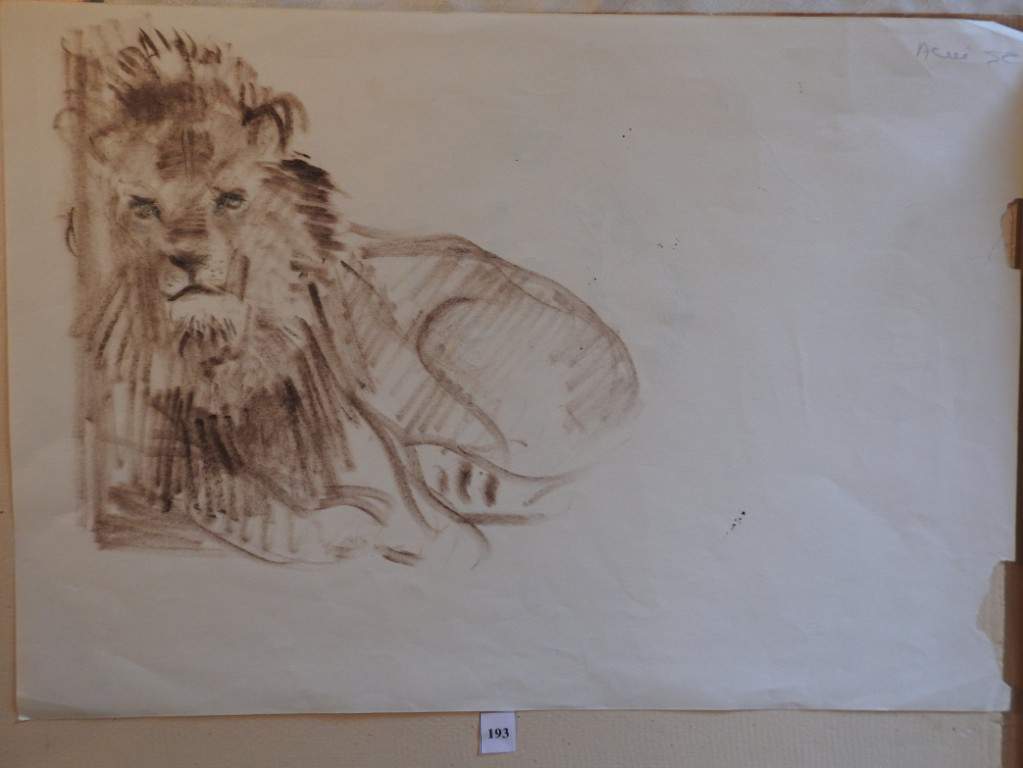Uffizi, futurist Bino Sanminiatelli's collection of drawings donated to museum
A collection of 205 drawings: portraits, animals, landscapes. These are the sheets of the futurist draftsman Bino Sanminiatelli (Florence, 1896 - Greve in Chianti, 1984), founder in 1917 of the futurist magazine Noi, donated to the Uffizi Galleries by his daughter Carla Sanminiatelli: a nucleus that chronicles half a century of the author’s creative production and constitutes, together with the Sanminiatelli fonds of the Gabinetto Vieusseux, the “Alessandro Bonsanti” Contemporary Archive and the Primo Conti Foundation, an important contribution to the study and documentation of the artistic-literary environment of Florence in the first half of the 20th century. The 205 drawings cover a time span from the 1910s to the 1950s.
In addition to being a prolific draftsman, Bino Sanminiatelli was also a writer, and in this sphere his activity is developed in three different stylistic moments: the Tuscan realist one of the early short stories, the more elaborate one of the novels of his maturity, and the diaristic-memorialistic one. A subdivision, this one, that finds a correspondence in the evolution of his graphic production. Even in the constant transcription of reality, the graphic style of the 1910s, with its formal simplifications perfectly in line with the coeval avant-garde reflections, later gave way, in the 1920s and 1930s, to a greater compositional solidity and a deeper and more attentive psychological introspection, in tune with the poetics of the “Return to Order” that, in the field of figurative arts, was asserting itself in the same years. It is no coincidence that Bino Sanminiatelli, after a childhood spent in Perignano (Pisa) and a high school experience in Rome, settled in Paris, became part of the Futurist movement, founding in 1917 with Enrico Prampolini the international magazine Noi, and a few years later had relations with the Zurich Dadaists and Tristan Tzara. Sanminiatelli combined his activity as a draftsman with that of a writer until 1938, and then decided to devote himself primarily to literature. He resumed drawing in the early 1950s, however, when he noted in one of his Diaries, “I tried to pick up a pencil today with anxiety, with terror and also with astonishment. I confess: I amazed myself competently.”
The group of sheets that has entered the Uffizi collection offers significant evidence of all of Sanminiatelli’s creative phases. It is the third major donation from which the Uffizi has benefited over the course of this year: in March, the collection of antique drawings and etchings of Carlo Pineider, a member of the family that launched the historic Florentine luxury stationery and leather goods brand, had arrived at the Gabinetto dei Disegni e delle Stampe, and just four months later, in July, with the bequest of art historian Carlo Del Bravo, 455 works including paintings, drawings and sculptures from the 16th to the 21st century became part of the museum’s treasure trove. Bino Sanminiatelli’s collection of works will be the focus of the museum’s next facebook live broadcast for the Uffizi On Air series, scheduled for Tuesday, Dec. 15 at 1 p.m.: talking about it will be the curator of 20th-century Drawings, Vanessa Gavioli.
“Patronage is in the DNA of this city,” says Uffizi Galleries Director Eike Schmidt: “and this is also demonstrated by this important bequest that closes 2020: a donation of particular significance not only for the Uffizi, but for Florence and its history. With Sanminiatelli’s drawings, the relationship between literature and art is sealed, in the name of a sublime Tuscan-ness that remains, thanks to the generous gesture of his daughter, a heritage available to all.”
 |
| Uffizi, futurist Bino Sanminiatelli's collection of drawings donated to museum |
Warning: the translation into English of the original Italian article was created using automatic tools. We undertake to review all articles, but we do not guarantee the total absence of inaccuracies in the translation due to the program. You can find the original by clicking on the ITA button. If you find any mistake,please contact us.



























